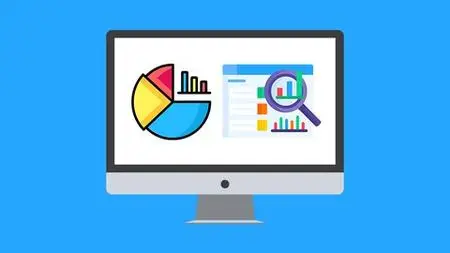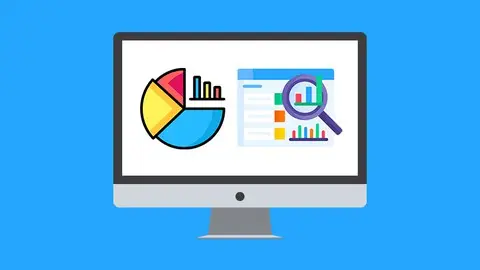Introduction To Data Visualization And Business Intelligence
Published 3/2024
MP4 | Video: h264, 1920x1080 | Audio: AAC, 44.1 KHz
Language: English | Size: 1.03 GB | Duration: 1h 4m
Published 3/2024
MP4 | Video: h264, 1920x1080 | Audio: AAC, 44.1 KHz
Language: English | Size: 1.03 GB | Duration: 1h 4m
Unlock the potential of data visualization and business intelligence principles to enhance your analytical skills.
What you'll learn
Identify the advantages and disadvantages of data visualization.
Select appropriate key performance indicators (KPIs) for visualization.
Create effective data visualizations using various chart types.
Evaluate BI principles for simplifying data visualization designs.
Understand the use of visualization tools like tables and maps.
Analyze visual hierarchy elements to enhance data communication.
Incorporate real-time functionality and interactivity when necessary.
Implement design principles for consistent and evolving dashboard development.
Requirements
A basic understanding of data visualization and business intelligence tools is helpful.
Description
**This course includes downloadable exercise files to work with and follow along.Welcome to "An Introduction to Data Visualization and Business Intelligence Principles." Throughout this course, you'll explore techniques and philosophies crucial for building effective business intelligence dashboards.Starting with the question, "What is data visualization?" we'll delve into its complexities and significance in conveying information accurately. You'll uncover the advantages and disadvantages of data visualization, gaining insights into how to present data effectively.As we progress, we'll discuss principles such as extolling data, avoiding clutter, and choosing relevant key performance indicators (KPIs). You'll learn the importance of simplicity, careful layout selection, and color usage in creating impactful visualizations. We'll explore various chart types, including pie, line, and bubble charts and other visualization tools like tables and maps.By the end of the course, you should understand the delicate balance between form and function in data visualization and have the skills to curate data into compelling stories, effectively communicating insights to diverse audiences. With practical exercises on building heat maps and stacked charts, you'll have hands-on experience applying the principles learned.Whether you're a business professional seeking to enhance data communication skills or a student interested in BI principles, this course offers valuable insights applicable across various fields. Join us to unlock the power of data visualization and gain a competitive edge in the world of business intelligence.At the end of this course, you should be able to:Identify the advantages and disadvantages of data visualization.Select appropriate key performance indicators (KPIs) for visualization.Create effective data visualizations using various chart types.Evaluate BI principles for simplifying data visualization designs.Understand the use of visualization tools like tables and maps.Analyze visual hierarchy elements to enhance data communication.Incorporate real-time functionality and interactivity when necessary.Implement design principles for consistent and evolving dashboard development.This course includes:1 hour of video tutorials10 individual video lecturesCourse exercise files to follow alongCertificate of completion
Overview
Section 1: Introduction to BI Principles
Lecture 1 Introduction
Lecture 2 WATCH ME: Essential Information for a Successful Training Experience
Lecture 3 DOWNLOAD ME: Exercise Files
Lecture 4 What is Data Visualization?
Lecture 5 Principles 1 through 7
Lecture 6 Principles 8 through 9
Lecture 7 Principle 10 Part 1: Charts
Lecture 8 Principle 10 Part 2: Tables and Maps
Lecture 9 Principles 11 through 15
Lecture 10 Exercise 1
Lecture 11 Exercise 2
Lecture 12 Course Close
Business analysts and data analysts,Those who want to create impactful data visualizations and dashboards



